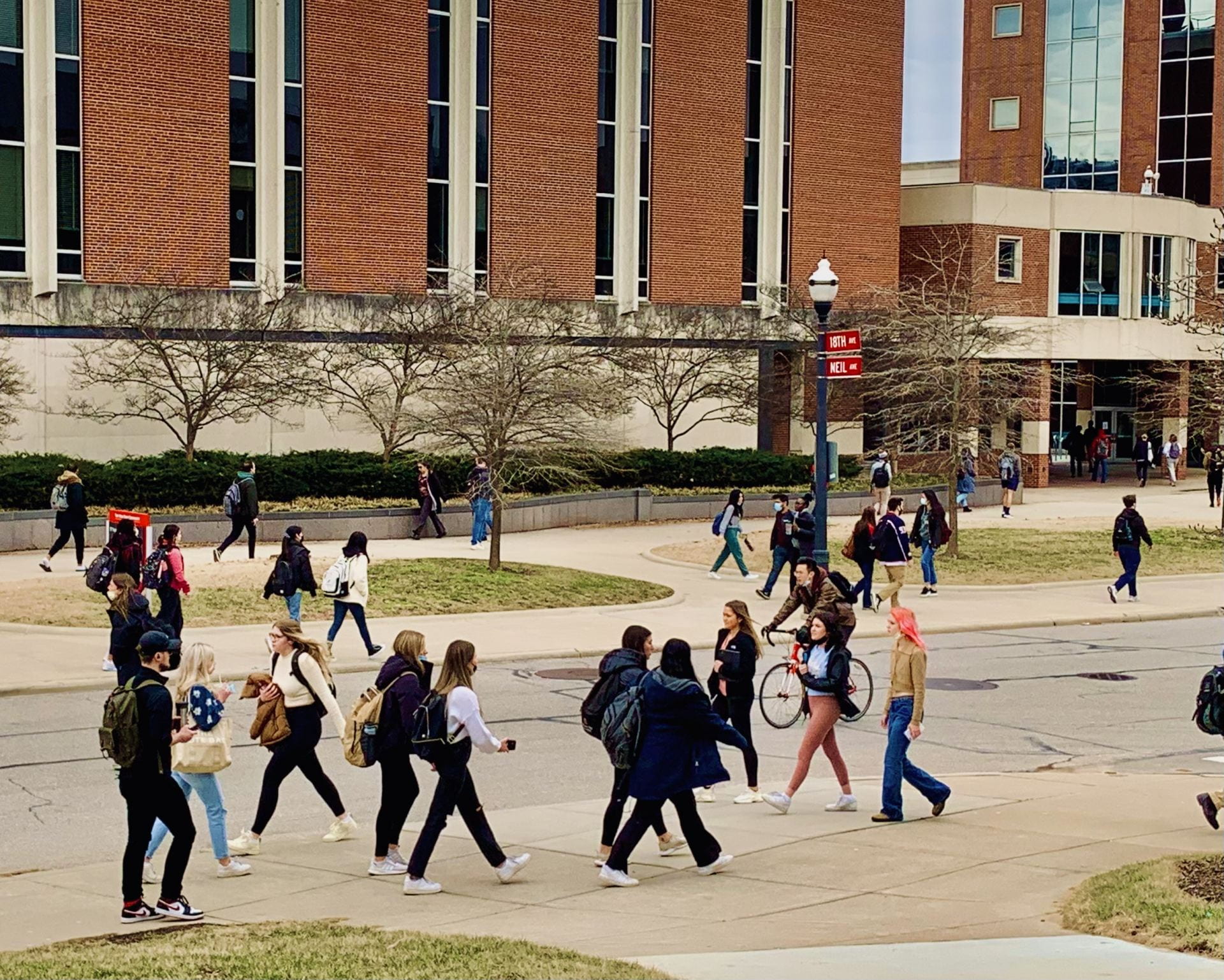
COVID-19 slowly became a cause for concern as cases began to pop up around Ohio, causing Ohio State to initially cancel in-person classes for a three-week period following spring break March 9, 2020. Credit: Amani Bayo | Lantern Reporter
Mariah Muhammad said she was enjoying a Caribbean cruise in March 2020 after a grueling autumn semester when the entire trajectory of her college life changed.
In an instant, COVID-19 shut down the world as she knew it. Muhammad, a fourth-year in criminology and criminal justice studies and English, said she rushed back to Ohio and, after being required to vacate her dorm room in Smith-Steeb Hall, returned home to Akron, Ohio.
“For OSU to be like, ‘No, you guys are not coming back right now,’ literally so abrupt, we were so in shock,” Muhammad said.
COVID-19 slowly became a cause for concern as cases began to pop up around Ohio, causing Ohio State to initially cancel in-person classes for a three-week period following spring break March 9, 2020.
The university announced classes would be held virtually for the remainder of the semester March 12, 2020.
When Ohio’s first stay-at-home order went into effect March 23, 2020, Muhammad said she and other students began to realize COVID-19 was not going away anytime soon.
“For me, I was more disappointed than I was scared,” Muhammad said.
Although Zoom classes, empty streets and vacant residence hall lounges haven’t escaped students completely, Ohio State has gradually resumed in-person activities and increased access to dining and study spaces that was restricted at the height of the pandemic.
Muhammad said the events that interrupted her sophomore year of college have made her eager to return to a pre-pandemic lifestyle.
“Looking back on it now I’m thankful for the time that I did have before the pandemic hit,” Muhammad said.
As the two-year anniversary of the university’s shutdown approaches, COVID-19 positivity rates have fallen to less than one percent, according to the university’s COVID-19 dashboard.
Ohio State will lift its mask mandate for indoor spaces Friday at 6 p.m. after Columbus lifted its mask mandate Monday following a recommendation to do so by Columbus Public Health.
Isaac Meisner, a third-year in environmental policy and decision making, said the lack of predictability surrounding the pandemic makes them unsure if a return to normal is even possible.
“I have had COVID anxiety and COVID fear since the pandemic started,” Meisner said.
Meisner said they remember the early days of lockdown being the most challenging because the abrupt isolation was a lot to process.
“I really depend on that kind of human interaction, and not having as much access to that was very difficult,” Meisner said.
Although they wish they could have explored more of Columbus as a freshman, Meisner said they’ve come to appreciate the opportunity quarantine provided to work on themselves.
Meisner said they are less eager to return to a life without masks, worrying a rush to remove COVID-19 restrictions may not properly consider those who are high risk.
“A lot of immunocompromised people, if not all of them, are really worried about their well-being,” Meisner said.
University spokesperson Chris Booker said Ohio State’s commitment to prioritizing health makes him hopeful for a bright and healthy future.
“I appreciate the university continuing to follow the science, continuing to follow the data, continuing to work with public health officials at the state, county and local level to make sure that students, faculty and staff are safe,” Booker said.


